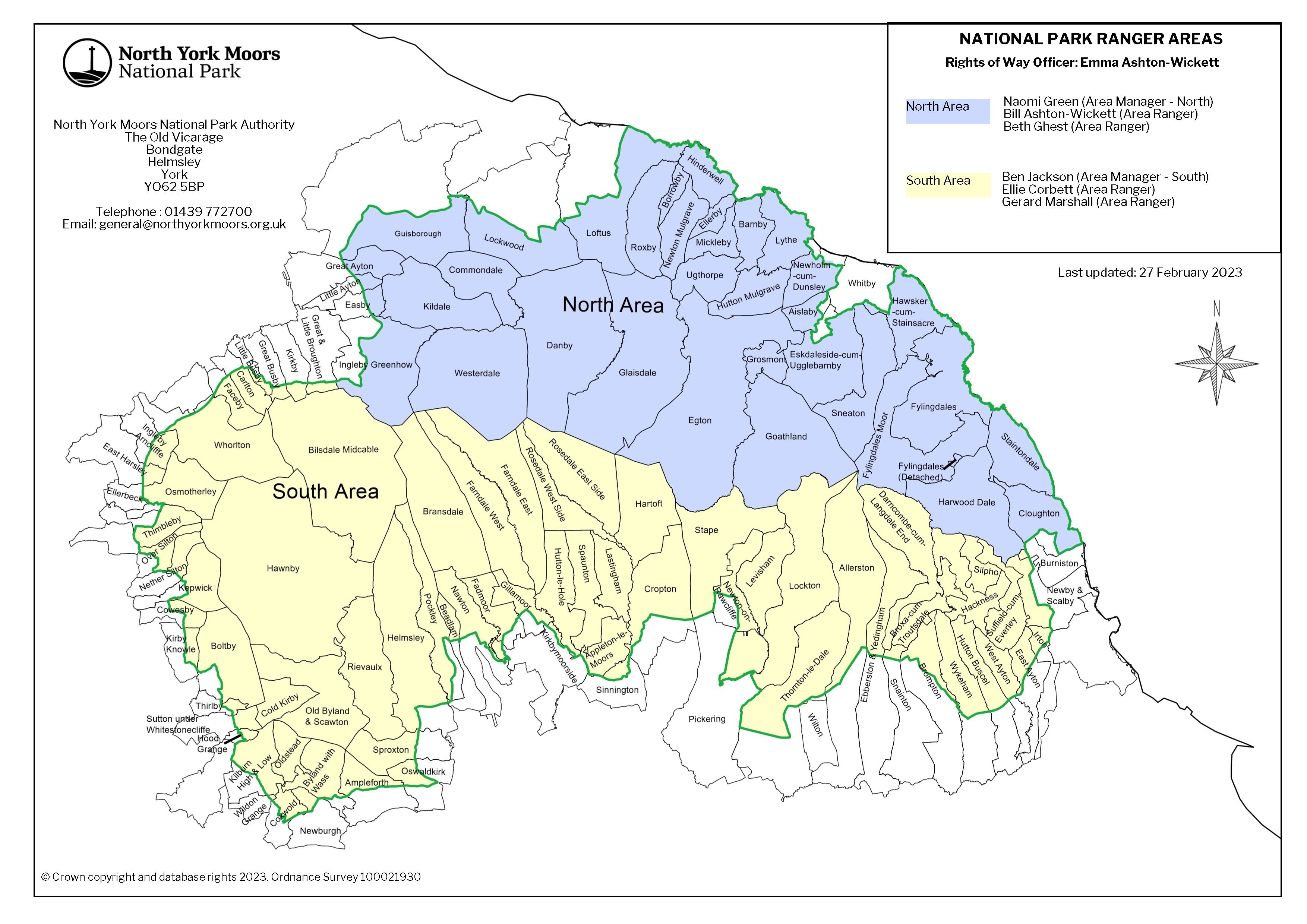Design Specifications for Furniture on Rights of Way*
*To be read in conjunction with the following Advice Note pages:
The National Park Authority acknowledges that it is necessary for landowners, tenants or occupiers of agricultural, livery or forestry landholdings to from time to time, erect new structures across Public Footpaths, Public Bridleways or Restricted Byways (known collectively as “Rights of Way”) in order to manage and control livestock and other animals.
New gates or stiles cannot be erected across a Right of Way without first obtaining authorisation (known as “A Section 147 Highways Act 1980 agreement”). In 2006 a British Standard design specification for gaps, gates and stiles (BS5709) was produced (and subsequently revised in 2018), and so any furniture installed on a Right of Way should adhere to the 2018 specifications. Please contact your area Senior Ranger for further advice.
Please note that any new structures installed without prior consent will be treated as being unlawful and action may be taken to ensure their removal. Also, if any new structures don’t adhere to the BS5709 design specification, action may be taken to ensure their modification - at the landowners, tenants or occupier’s own cost.
Replacement gates do not require new authorisation but they must adhere to the BS5709 design specification. If they don’t, action may be taken to ensure either their removal or modification - at the landowners, tenants or occupier’s own cost.
What’s needed – a gap, gate or stile?
When considering granting consent for either a new or replacement gate or stile, the National Park Authority is legally required (s.69 Countryside and Rights of Way Act 2000) to work on the principle of “least restrictive access” and have due regard to the needs of persons with mobility problems.
Therefore, when making an assessment the following questions are considered:
- Is any form of barrier really necessary here, could a gap be left for walkers & riders?
- If a barrier is required, could it be a gate?
After employing this principle, only gates will be authorised on Public Bridleways and Restricted Byways and only in extenuating circumstances will a stile be authorised on a Public Footpath. This principle will also be considered when a stile needs replacing – can a gap be left or can it be replaced with a gate instead?
Gate specifications
All hand-gates, bridle-gate and field-gates should adhere to the following requirements:
- All gates on Public Footpaths should swing freely and be opened easily from either side. Gates can be hung to swing freely whilst being self-closing;
- All gates on Public Bridleways and Restricted Byways should swing freely and ideally, should also be openable with one hand from horse-back. Also, the handle to operate any latch should be fitted in such a way that the same hand can operate the catch and then move the gate in one easy movement. If the gate is hung to be self-closing, please ensure that it does so slowly to allow a horse-rider time to get through;
- Barbed wire should not be attached to either the hanging post or clashing post or at a distance of 2m either side of the gate in order to prevent a horse or person snagging themselves;
- The minimum width for a hand-gate or kissing-gate on a Public Footpath is 1.0m;
- The minimum width for a bridle-gate on a Public Bridleway is 1.52m;
- The minimum width for a field-gate on a Restricted Byway is 3.04m
Pedestrian gate design
HangingPost 150mm x 150mm x 2400mm
Clapping Post 125mm x 125mm x 2400mm
Gate 1220mm
(For self-closing gates: off-set the bottom hinge 35mm from top hinge as shown)
Gate fitting not illustrated.
Various gate fittings are available but all should be visible and easy to open from both sides
Bridle gate design
All dimensions in mm
Hanging Post 175mm x 175mm x 2400mm
Clapping Post 150mm x 150mm x 2400mm
Gate 1670mm
(For self-closing gates: off-set the bottom hinge 35mm from top hinge as shown)
Illustration shows Easy Latch fitting. Various handles are available-straight, trombone and stock proof.
Stile specifications
Gates are always preferable to stiles on Public Footpaths as they allow easier access and can be hung to ensure stock security. However, if circumstances only allow for a stile, then it should adhere to the following requirements:
- All stiles should have two steps set apart and a hand-post, to allow for easier access;
- The minimum width for a new stile is 1.2m but it is acknowledged that this isn’t always possible. The Senior Ranger can advise further in this instance;
- Where the fence height exceeds 950mm, the step heights can be adjusted to ensure the stile is still easy to use.
Two-step stile design
Rails 87mm x 38mm x 1388mm (4 off)
Posts 1800mm x 100mm x 75mm (2 off)
Stile Board 1070mm x 150mm x 40mm (2 off)
Stile Foot Short 900mm x 100mm x 75mm (2 off)
Stile Foot Long 1200mm x 100mm x 75mm (2 off)
Hand-hold 1830mm x 87mm x 38mm (1 off)
- 1OOmm nails used for fence rails and 125mm nails for step boards.
- Handhold secured with M1Ox1OOmm coach screws at 50mm from top and 1OOmm from the bottom with one in-between. Pre drill pilot holes to avoid splitting wood.
- Do not exceed step heights or top rail height.
Enquiries
Please direct enquiries to the Senior Ranger for your area of the National Park:
Naomi Green (North Area): n.green@northyorkmoors.org.uk
Ben Jackson (South Area): b.jackson@northyorkmoors.org

For general Rights of Way enquiries, either email: paths@northyorkmoors.org.uk, call (01439) 772700 or write to North York Moors National Park Authority, The Old Vicarage, Bondgate, Helmsley York, YO62 5BP
This page is to be read in conjunction with the following pages:
